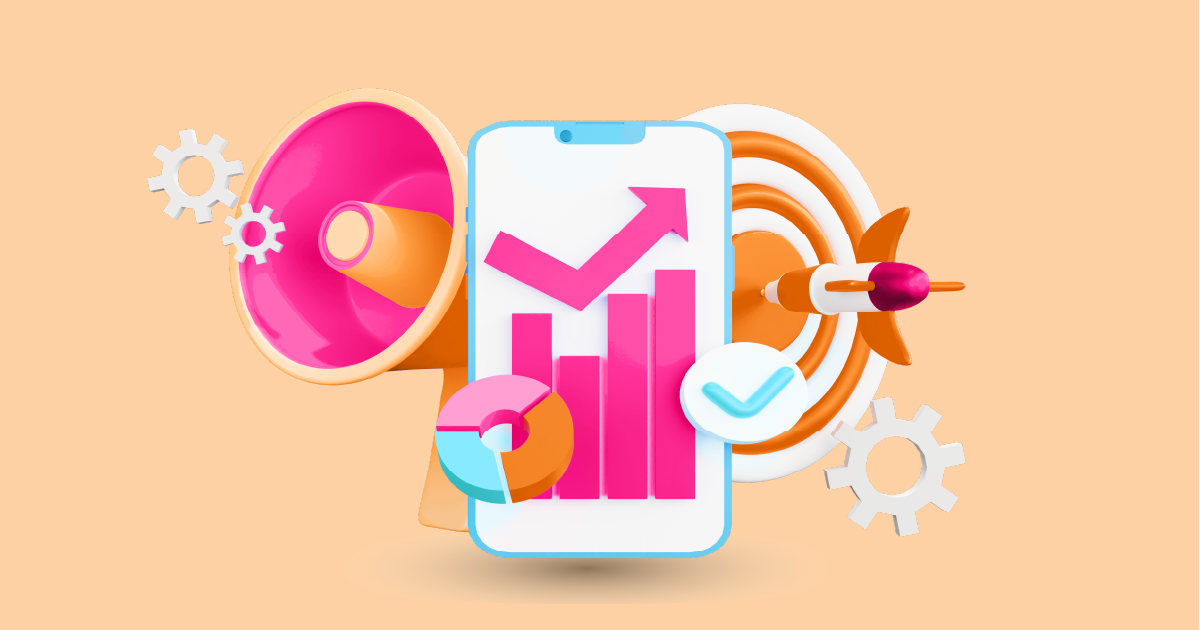In today’s digital age, maintaining a strong online presence is crucial for businesses to stay competitive. With the ever-growing influence of social media, companies need to actively monitor and engage with their audience across various platforms. This practice, known as the best social media monitoring, has become an essential component of any successful marketing strategy.
Introduction to The Best Social Media Monitoring

1. What is social media monitoring?
Social media monitoring involves tracking and analyzing conversations and mentions about a brand, product, or industry across different social media channels. It allows businesses to gain valuable insights into customer sentiment, emerging trends, and competitor activities.
2. Importance of social media monitoring for businesses
In a highly interconnected world, where consumers share their opinions and experiences online, businesses cannot afford to overlook social media monitoring. It provides them with the opportunity to listen to their audience, understand their preferences, and address any concerns promptly. By actively monitoring social media channels, companies can effectively manage their brand reputation and stay ahead of the competition.
Benefits of Media Monitoring
1. Understanding customer sentiment
One of the primary benefits of social media monitoring is the ability to gauge the sentiment of your audience towards your brand. By analyzing mentions and comments, businesses can identify whether the overall sentiment is positive, negative, or neutral. This insight enables them to tailor their marketing efforts and address any issues that may arise.
2. Identifying emerging trends
Social media monitoring allows businesses to stay informed about the latest trends and topics relevant to their industry. By tracking hashtags, keywords, and popular discussions, companies can identify emerging trends and capitalize on them to enhance their marketing campaigns and product offerings.
3. Improving customer service
Effective social media monitoring enables businesses to provide timely and personalized customer support. By promptly addressing customer inquiries and concerns, companies can demonstrate their commitment to customer satisfaction and build long-lasting relationships with their audience.
4. Enhancing brand reputation
Maintaining a positive brand image is essential for businesses to attract and retain customers. Social media monitoring helps companies identify and mitigate any negative mentions or crises that may arise. By addressing issues promptly and transparently, businesses can safeguard their reputation and maintain the trust of their audience.
5. Monitoring competitors
In addition to tracking their brand, media monitoring allows businesses to keep an eye on their competitors. By analyzing competitor mentions and activities, companies can identify areas where they excel and opportunities for improvement. This competitive intelligence enables businesses to stay one step ahead in the market.
Key Features to Look for in Media Monitoring Tools
1. Real-time monitoring
The ability to monitor social media channels in real time is essential for staying updated on the latest conversations and trends. Look for tools that offer real-time monitoring capabilities and instant notifications for relevant mentions.
2. Sentiment analysis
Sentiment analysis allows businesses to understand the emotions and attitudes expressed in social media mentions. Choose tools that provide sentiment analysis features to gauge the overall sentiment towards your brand and identify areas for improvement.
3. Customizable dashboards and reports
Customizable dashboards and reports enable businesses to track key metrics and insights relevant to their goals. Look for media monitoring tools that offer customizable dashboards and reports tailored to your specific needs and objectives.
4. Integration with other tools
Integration with other marketing tools and platforms is crucial for streamlining workflows and maximizing efficiency. Choose media monitoring tools that integrate seamlessly with your existing systems, such as CRM software, email marketing platforms, and analytics tools.
5. Scalability
As your business grows, so does the volume of media mentions and data to analyze. Ensure that the social media monitoring tool you choose can scale with your business and handle increasing amounts of data without sacrificing performance or accuracy.
Best Practices for Effective Media Monitoring
1. Define your goals
Before embarking on media monitoring, clearly define your objectives and what you hope to achieve. Whether it’s improving brand sentiment, increasing engagement, or monitoring competitor activities, having specific goals will guide your monitoring efforts and measure success.
2. Choose the right keywords
Selecting the right keywords and phrases to monitor is crucial for capturing relevant mentions and conversations. Conduct thorough keyword research to identify terms and hashtags commonly used by your target audience and competitors.
3. Monitor multiple platforms
Media conversations occur across various platforms, including Twitter, Facebook, Instagram, LinkedIn, and more. Ensure that your social media monitoring efforts cover all relevant platforms to gain a comprehensive understanding of your audience’s sentiments and behaviors.
4. Engage with your audience
Media monitoring is not just about listening; it’s also about engaging with your audience. Respond to comments, address concerns, and actively participate in conversations to build rapport with your audience and foster a sense of community around your brand.
5. Analyze and adapt
Regularly analyze the data collected through media monitoring to identify trends, patterns, and areas for improvement. Use these insights to refine your marketing strategies, tailor your messaging, and adapt to changing consumer preferences effectively.
Case Studies: Successful Implementation of Media Monitoring
Company A: How social media monitoring helped boost sales
Company A, a leading e-commerce retailer, implemented media monitoring to track customer feedback and sentiment. By promptly addressing customer concerns and leveraging positive feedback, they were able to enhance their product offerings and improve the overall shopping experience. As a result, they saw a significant increase in sales and customer satisfaction.
Company B: Using social media monitoring to handle crises effectively
During a product recall crisis, Company B utilized media monitoring to monitor conversations and sentiments surrounding the issue. By responding transparently and proactively addressing customer concerns, they were able to mitigate the negative impact on their brand reputation and regain consumer trust.
Challenges
1. Data overload
The sheer volume of data generated on social media can be overwhelming for businesses to analyze effectively. To overcome this challenge, businesses should prioritize the most relevant conversations and focus on extracting actionable insights.
2. Ensuring accuracy
Automated sentiment analysis tools may not always accurately interpret the nuances of human language and emotions. Businesses should supplement automated analysis with manual review and validation to ensure the accuracy of their insights.
3. Handling negative feedback
Negative feedback and criticism are inevitable on social media. Instead of ignoring or deleting negative comments, businesses should address them transparently and constructively. Turning negative feedback into an opportunity for improvement can help businesses strengthen their brand reputation and build trust with their audience.
4. Privacy concerns
As social media monitoring involves collecting and analyzing publicly available data, businesses must respect user privacy and adhere to data protection regulations. Transparency and consent are essential when monitoring conversations and interactions on social media platforms.
Future Trends
1. AI and machine learning advancements
Advancements in artificial intelligence (AI) and machine learning technology will continue to enhance the capabilities of media monitoring tools. Predictive analytics, natural language processing, and image recognition algorithms will enable more accurate sentiment analysis and trend prediction.
2. Increased focus on privacy protection
With growing concerns about data privacy and security, media monitoring tools will prioritize privacy protection features. Encryption, anonymization, and compliance with data protection regulations will become standard practices to ensure the ethical collection and use of data.
3. Integration with customer relationship management (CRM) systems
Integration with CRM systems will enable businesses to seamlessly integrate social media insights into their customer management processes. By consolidating customer data from various sources, businesses can gain a holistic view of their audience and personalize their interactions effectively.
Conclusion
In conclusion, media monitoring is an invaluable tool for businesses looking to maintain a strong online presence, understand their audience, and stay ahead of the competition. By actively monitoring and analyzing social media conversations, businesses can gain valuable insights, improve customer engagement, and enhance their brand reputation. With the right tools, strategies, and practices in place, businesses can leverage media monitoring to drive success in today’s digital landscape.
Ready to take your media monitoring to the next level? Request a demo from AIM Technologies today and discover how our advanced tools can empower your business to make informed decisions, engage with your audience effectively, and achieve your marketing goals.
FAQs
What is media monitoring?
- Media monitoring involves tracking and analyzing conversations and mentions about a brand, product, or industry across different social media channels to gain valuable insights.
How does social media monitoring benefit businesses?
- Media monitoring benefits businesses by helping them understand customer sentiment, identify emerging trends, improve customer service, enhance brand reputation, and monitor competitors effectively.
What are some key features to look for in monitoring tools?
- Key features to look for in monitoring tools include real-time monitoring, sentiment analysis, customizable dashboards, and reports, integration with other tools, and scalability.
How can businesses overcome challenges in media monitoring?
- Businesses can overcome challenges in media monitoring by prioritizing relevant conversations, validating automated analysis with manual review, addressing negative feedback transparently, and ensuring compliance with data privacy regulations.
What does the future hold for media monitoring?
- The future of media monitoring will be shaped by advancements in AI and machine learning, increased focus on privacy protection, and integration with CRM systems to provide more personalized customer experiences.




